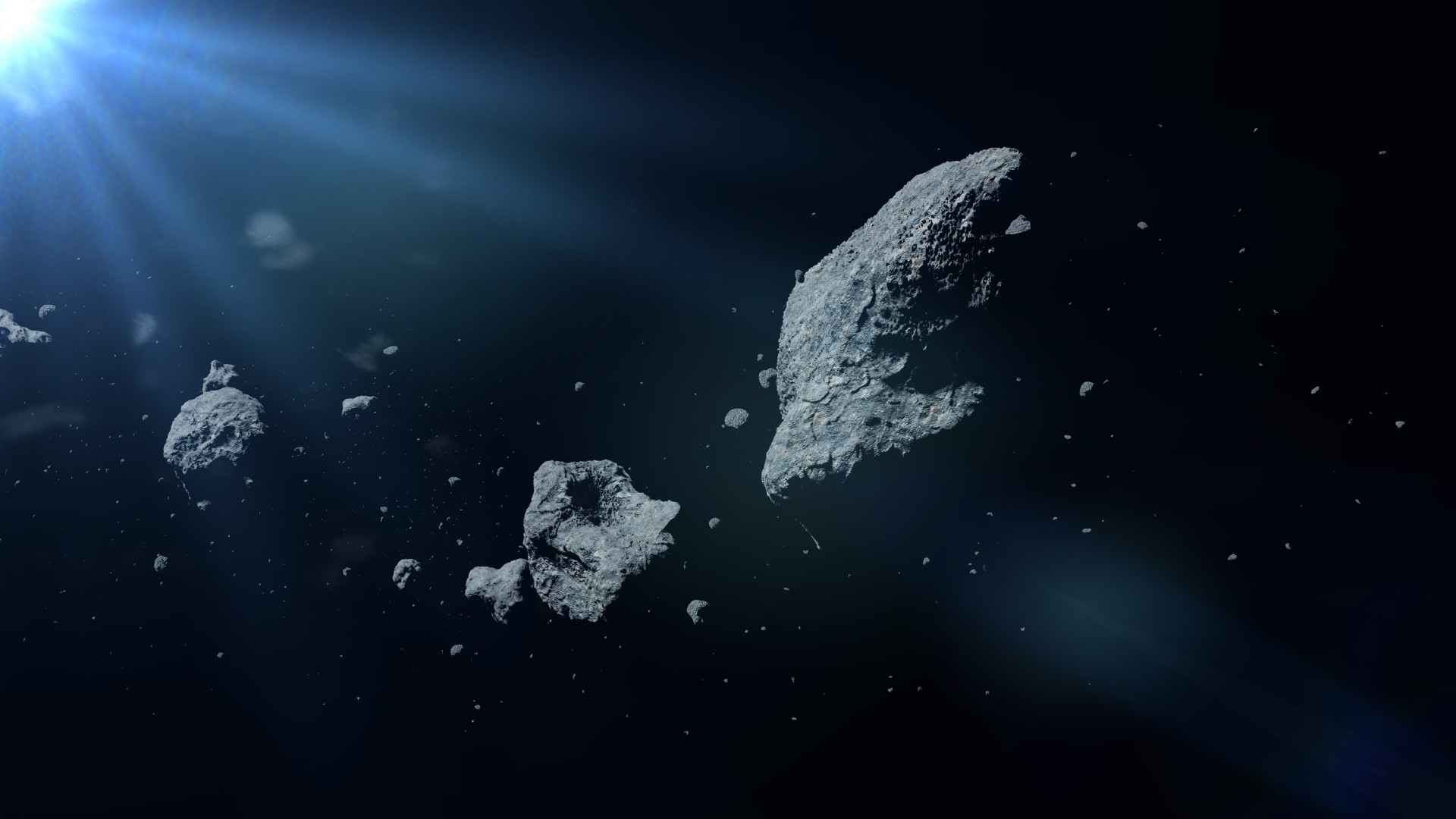
Asteroid-mining startup AstroForge plans to make history next year.
The California company announced Tuesday (Aug. 20) that it aims to launch its third mission in 2025, as a ridealong on Houston company Intuitive Machines' IM-3 moon mission. That launch will send AstroForge's 440-pound (200 kilograms) Vestri probe to dock with a metallic near-Earth asteroid — an unprecedented leap for a commercial spacecraft.
"If successful, this mission will be the first private mission to land on another body outside of our Earth-moon system and will move us closer to realizing our mission of making off-world resources accessible to all humankind," AstroForge wrote in an update Tuesday.
That same update revealed that AstroForge has raised $40 million more from investors, bringing its total funding haul to date to $55 million.
AstroForge was founded in January 2022 and came out of stealth mode four months later. The company plans to extract resources from asteroids, "to unlock a cost-effective and sustainable mining solution that replenishes resources and safeguards our planet's future," as it wrote in Tuesday's update.
AstroForge plans to focus on metals — a different tack than that taken by some previous off-Earth mining startups, which aimed to go after asteroid water. Water can be split into its constituent hydrogen and oxygen, the chief components of rocket fuel. Mining it in space could therefore potentially help establish "gas stations" for spacecraft, fueling their voyages deep into the final frontier cheaply and efficiently.
That may still happen, but new players will likely have to emerge to make it so; the high-profile companies that were eyeing asteroid water are no longer actively pursuing it.
Get the Space.com Newsletter
Breaking space news, the latest updates on rocket launches, skywatching events and more!

AstroForge already has one mission under its belt, sending its toaster-sized Brokkr-1 probe to orbit atop a SpaceX Falcon 9 rocket in April 2023. The chief goal was to demonstrate the company's refinery technology in space, but that didn't happen; mission team members were unable to activate Brokkr-1's refinery payload as planned.
AstroForge's second mission, called Odin, is scheduled to launch later this year, as a secondary payload on Intuitive Machines' IM-2 moon mission. Odin will pave the way for Vestri, collecting imagery of the asteroid that Vestri will land on. (AstroForge has not yet announced the identity of the target space rock.)
Odin's road to the pad has been a bit bumpy, however. This past March, the vehicle originally slated to fly on the mission failed vibration testing, which is designed to ensure that a spacecraft can survive the rigors of launch. In April, AstroForge decided to use the planned Vestri vehicle for Odin, which required "accelerated development," as the company wrote in an update last month.
The new Odin vehicle, which weighs about 220 pounds (100 kg), was built completely in-house, whereas the one that failed vibration testing consisted of parts supplied by third parties, apart from its science payload, according to AstroForge.
That shift wasn't just a one-time thing; Vestri "will be developed completely in-house from the start," AstroForge wrote in Tuesday's update. Vestri's "insights and characterization of our target asteroid's composition will allow us to obtain the quality and quantity of valuable elements located on the asteroid."
Actual mining activity will presumably follow, on a series of missions to come.
Join our Space Forums to keep talking space on the latest missions, night sky and more! And if you have a news tip, correction or comment, let us know at: community@space.com.

Michael Wall is a Senior Space Writer with Space.com and joined the team in 2010. He primarily covers exoplanets, spaceflight and military space, but has been known to dabble in the space art beat. His book about the search for alien life, "Out There," was published on Nov. 13, 2018. Before becoming a science writer, Michael worked as a herpetologist and wildlife biologist. He has a Ph.D. in evolutionary biology from the University of Sydney, Australia, a bachelor's degree from the University of Arizona, and a graduate certificate in science writing from the University of California, Santa Cruz. To find out what his latest project is, you can follow Michael on Twitter.
-
Ken Fabian I do think asteroid mining is the real space enterprise prize - real resources of reliably high commercial value.Reply
I'm inclined to put the ability to (robotic-remote) mine and produce the consumables (fuel/reaction mass) for in-space transport between asteroid and LEO first, as a necessary foundation for success. That is because I expect fuel/RM to be the single biggest mass requirement and sourcing that from Earth is a huge ongoing cost that needs to be avoided. When a round trip can deliver materials from asteroids to LEO and return the spacecraft and materials to the asteroid (to refuel there) with barest minimum of materials from Earth there is potential for profitability. Which can include providing materials like water to space stations on the side. I see that capability to run in-space rocketry entirely on in-situ consumables to be almost as important as avoiding dependence on live astronauts.









